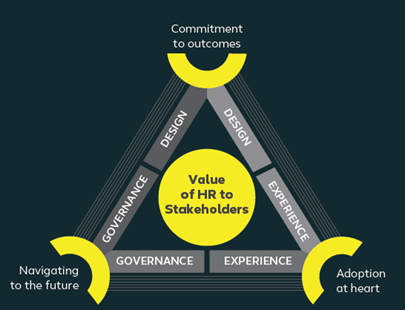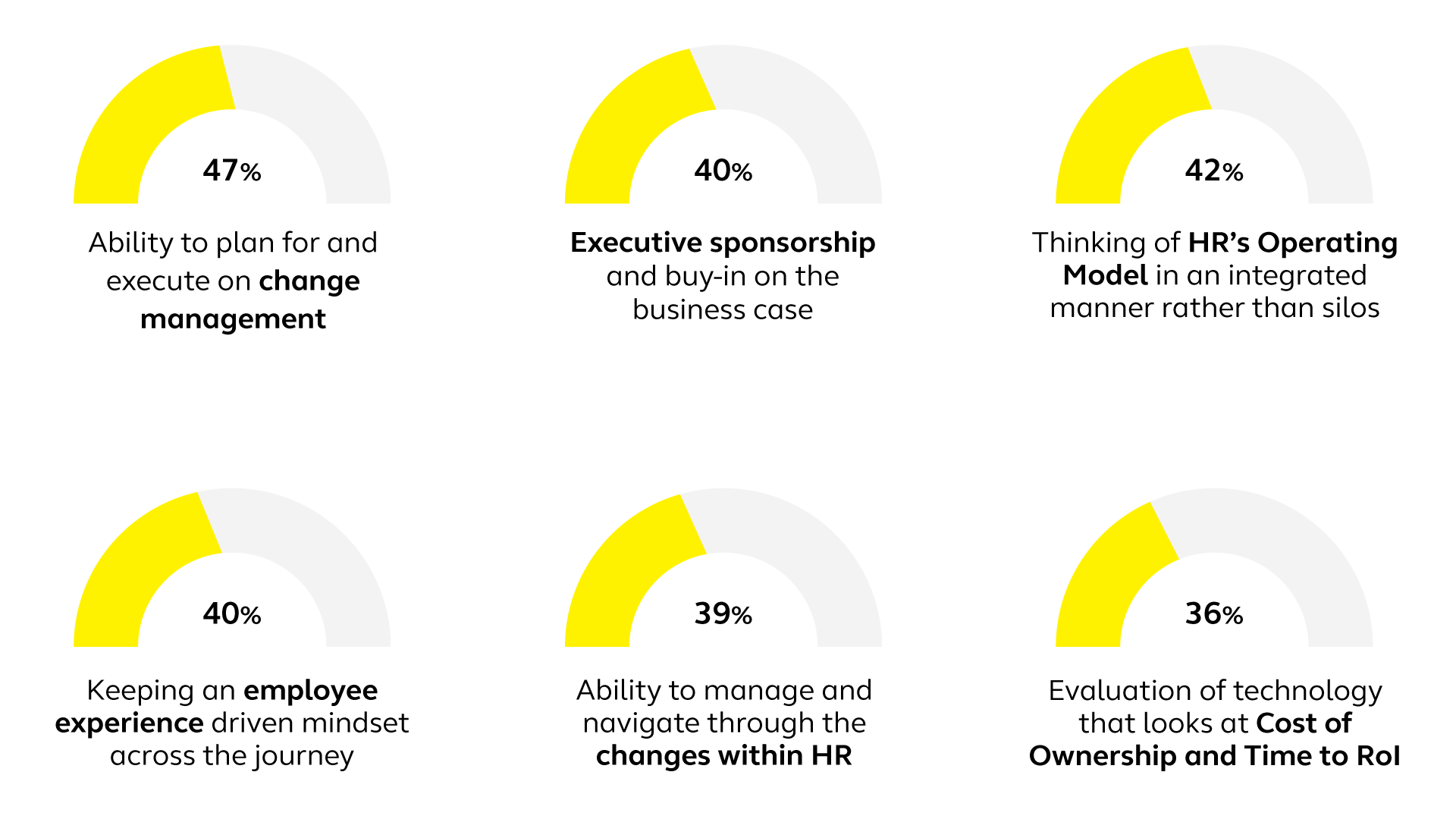
Alight’s State of HR Transformation study asked 2,200 HR and business leaders from across Asia: 1) How can HR support growth, and 2) the main challenges they face putting their plans into action.
The findings show that speed of change is vital. The need for adaptable HR can’t be held back by slow innovation, skills gaps and a lack of leadership talent pipeline. All of these factors emerged as the biggest talent-related challenges facing organisations.
The approach HR departments take to address talent challenges following the COVID-19 pandemic and other major crises.
HR is being tasked to focus efforts on delivering strategic value to their organisations. This will put HR Directors under pressure to design and implement a talent strategy that matches the development of employees to desired business outcomes.
Adaptable HR is a way of working that enables HR to thrive in a world of constant change while creating a competitive advantage for the business.

Adaptable HR as a construct to tackle talent risks
There are three main levers HR can use to build greater certainty in the talent landscape. These are design, experience and governance.
These components drive value by taking a holistic approach from purpose and policy, right through process, technology and to insights. This provides the framework for a fast-paced, data-based decision-making process and frictionless user experience.
Alight’s State of HR Transformation study revealed that firms using the Adaptable HR model are:
More likely to have growth in revenues and profit in the next 12 month
More confident to address talent risks posed by the changing environment
More productive in terms of their HR:FTE ratio
These figures are vital considering the pace of change required of organisations and the role of HR in it.
What does Adaptable HR look like in practice?
The Adaptable HR operating model improves productivity. When complemented with a robust HR technology strategy, the results are amplified. The traditional view of fixing the HR operating model first, then looking at HR technology, is no longer appropriate.
Adaptable HR organisations will need to think of both their HR operating model and technology together. The very concept of adaptability, in today’s corporate environment where skills and technology are constantly evolving, requires the capacity to shift both at the same time.
Organisations can complete their HR transformation by updating both the HR operating model and HR technology with discipline to ensure complete satisfaction.
Moreover, Adaptable HR organisations embrace agile principles and philosophy. This is reflected in ways of working that maintain a human (employee) centric approach, where employee experience and sense of belonging is crucial to success.
Successful organisations closely align on employee experience and business value by making the connection between strategy and an individual’s contribution. All this while applying other agile principles and practices, such as the use of design thinking to solve various challenges.
These empower teams to co-create and collaborate across functions, introduce transparency of data and results and the use of technology (including artificial intelligence, machine learning) to automate and be fast and the “good over perfect” approach to secure incremental improvements.

Agile Practices in Adaptable HR Organisations
Considering the value that HR brings to the table is not only about making HR better but supporting the success of the rest of the organisation.
Adaptable HR organisations focus on 3 fundamental questions:
- Why are expectations from HR changing (i.e., changes in environment and their impact on business)?
- What are these new expectations?
- How does HR match these expectations?
The answers to these questions are unique to each organisation. We can’t provide an answer to those questions in this article. Instead, we focus on what a successful transformation to an Adaptable HR organisation can look like. This is based on feedback from organisations already on the journey.
The art of becoming adaptable is nothing more than the ability to lay these enablers out in a six-step logical manner:
- Plan and implement change management
A model for change management is essential. Yet, this is something often overlooked during transformations.
One reason could be considering the transformation as a project rather than the new normal. Therefore, there is a long-term view for change management.
Another reason could be failing to acknowledge the effects of a lack of change management. This might also be indicative of an HR function that persistently fails to sell a vision to the business.
- Secure executive sponsorship and buy-in for the business case
Successful organisations use hard facts to support decisions. In consulting, we’re no strangers to these decision-making processes. We are acutely aware of how important communication is and how understanding your audience is in getting a positive outcome.
Often the non-financial aspects are overlooked when presenting a business case. This makes it challenging to quantify intangible aspects. Being able to articulate the advantages these aspects will bring to the organisation in the way of risk management and outcomes will certainly help.
- Embrace integration rather than silos for the HR operating model
HR transformation needs perform on all four of the below aspects:
- Outcomes and program design
- HR organisation and capabilities
- HR services (including technology)
- Analytics and governance
A piece-meal approach that addresses only one or two of the above won’t be effective. Each is essential and requires constant tweaking and rebalancing to ensure HR stays on top of talent challenges and with the pace of business change.
- Consider the employee experience
Change will only happen with the buy-in of users. The more convenient the change, the greater the adoption rates. In other words, the users define the value, particularly as employees and managers now expect the same type of convenient consumer experience that we all get in our daily lives ( – in Robohead).
- Manage and navigate HR change programs
The more HR can lead the transformation, the better outcomes will be for the business. However, before this can happen, HR first has to manage its own transformation.
Championing the unlearning and relearn framework within HR can be a game changer for organisations. Because these mindset changes need to be permanent and sustainable.
HR not only has to lead in their application, but also in determining what part it should play in an individual’s performance and development and the best way to reward this.
- Select technology based on cost of ownership and time to get a return
Many organisations struggle to put in place a robust vendor selection process due to the time and knowledge required to do this. Having a consulting partner will not only facilitate this but add an element of objectivity to ensure the true costs and return on investment (ROI) are taken into account.

Enablers of successful HR transformations and percentage of companies that value them positively
Combined approach to HR transformation
Technology alone won’t deliver an effective HR transformation. The future of achieving business objectives using a talent strategy relies on the combined efforts of both the HR operating model and technology.
For a deeper dive into the future of HR as a driver for achieving business objectives
Download Alight’s 2021 State of HR Transformation Study.


